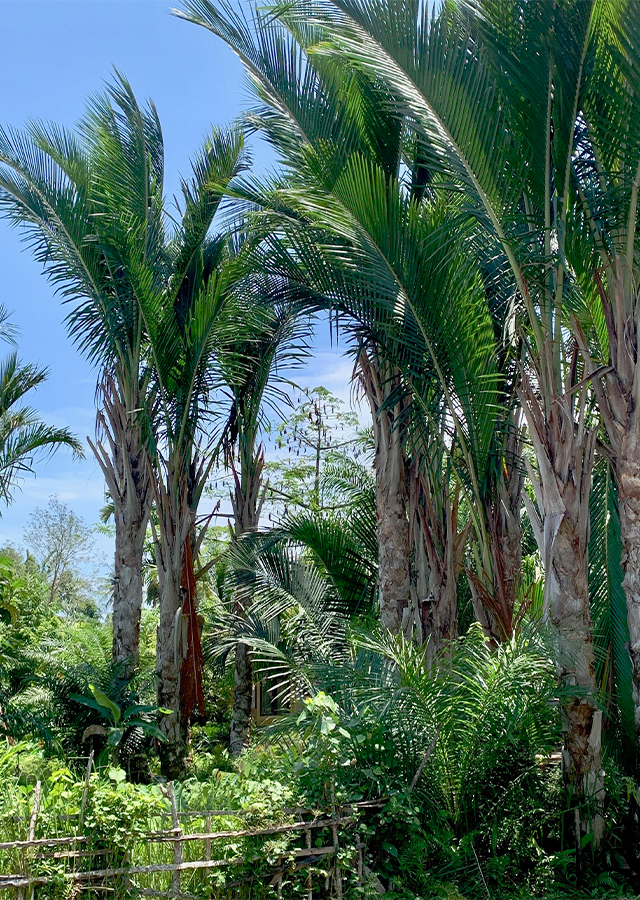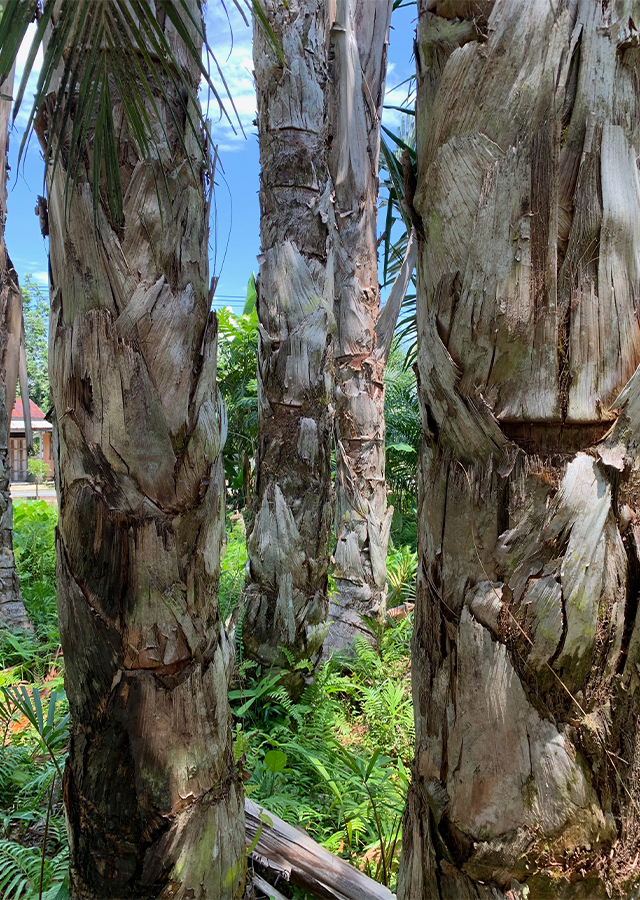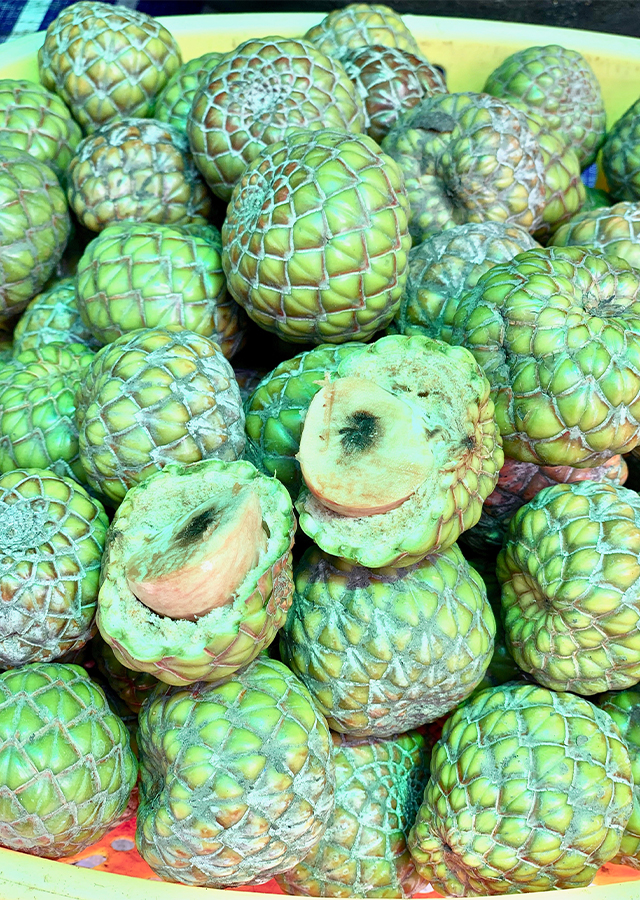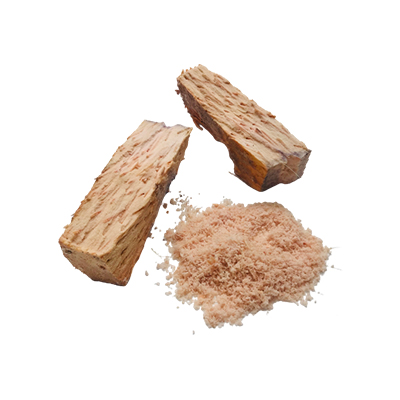Sago Palm
Metroxylon sagu Rottb.
Arecaceae
Location in our garden
Palm



Synonym
Metroxylon hermaphroditum Hassk.
Metroxylon inerme (Roxb.) Mart.
Metroxylon laeve (Giseke) Mart.
Habitus
Palm. Multi-stemmed evergreen palm tree, growing from 6-25 m tall
Part Used
Leaves
Fruit
Roots
Stem
Growing Requirements
Full Sunshine
Habitat
Wetland
Forest
Overview
The sago palm probably originates from New Guinea and the Moluccas but has only recently been dispersed for research beyond South-East Asia and the nearby Pacific islands.The plant is commonly harvested from the wild for its many uses. Word sago is originally Javanese, meaning starch containing palm pith.
Vernacular Names
Pohon sagu (Indonesia), Lumbia (Philippines), Sa khu (Thailand), Tha-gu-bin (Myanmar), Sak-sak (Papua New Guinea), Palma da sago (Italy), Palmier sagoutier (France), Sagopalme (German).
Agroecology
Natural stands of sago palm occur on swampy coastal plains, river floodplains and higher up on flat valley floors lowland tropical climates where it is found at elevations from sea level to 700 m. It grows best in areas where annual daytime temperatures are within the range 25-36 °C and on clay soils with a high organic-matter content.
Morphology
- Stems - 30-60 cm in diameter, 7-20 m tall, lower part ringed with leaf scars.
- Leaves - simply pinnate, petiole very robust, widening at its base into a stem-clasping sheath.
- Flowers - terminal panicle, straight to curving upward, morphologically constituting separate lateral inflorescences arranged spirally on the main stem in the axils. 3-merous with 6 stamens.
- Fruits - depressed-globose to obconical drupe, rhomboid, pointing downwards, greenish-yellow, turning straw-coloured towards or after fruit fall.
- Seeds - subglobose, firmly embedded in shiny cream-coloured firm flesh which turns pinkish when exposed to air; testa dark brown.
Cultivation
- Propagated by seeds - pre-soak for 24 hours in warm water and sow in containers. Germination usually takes several months.
- Division of suckers - the suckers have the advantage of being readily available and of producing homogeneous offspring, which allows selection of superior forms.
Chemical Constituents
Alkaloid, tannin, lignin, p-hydroxybenzoic acid, flavonoid and phenolic.
Traditional Medicinal Uses
- Studies showed antidiarrheal, antibacterial, antioxidant and antifertiity activities.
- In Malaya, as an excipient in making poultices for shingles.
- In Papua New Guinea, stem sap is applied to forehead to ease headaches. Starch from plant trunk mixed with water and drunk for diarrhea and stomach pains. Starch paste applied to burns. Leaf used to cover fresh or infected sores until they heal. Liquid starch given to newborns to treat enlarged spleen.
- In South Kalimantan, fresh roots of sago used as antidiarrheal.
- Used as traditional antifertiity medicine by Dayak people in Central Kalimantan.
Part Used
Reference Sources
- Flach, M. & Rumawas, F. 1999. Plant Resources of South-East Asia No 9: Plants yielding non-seed carbohydrates. PROSEA Foundation, Bogor, Indonesia.
- Metroxylon sagu Rottb. in GBIF Secretariat (2021). GBIF Backbone Taxonomy. Checklist dataset https://doi.org/10.15468/39omei accessed via GBIF.org on 2021-12-01.
- Orwa C, A Mutua, Kindt R , Jamnadass R, S Anthony. 2009 Agroforestree Database:a tree reference and selection guide version 4.0 (http://www.worldagroforestry.org/sites/treedbs/treedatabases.asp).



